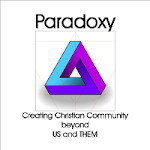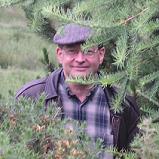Here’s what I know: again this year, literally tons of new books will be published – shelves, libraries, trucks, dumpsters full – and most among them won’t carry a fraction of the substance this book holds. A bunch of them will become big sellers too, even though they don’t hold a candle – in terms of content or readability – to this one. There are many reasons for this paradox, including this: too many people want simple, easy, quick, and formulaic answers to the problems they face, and those books deliver what the customer wants – at least they deliver information that is simple, easy, quick, and formulaic.
But those readers will eventually discover that formulaic answers don’t serve. They don’t match the complexities and unpredictabilities of the real world like this book does. That’s why I know you’re in for something better with this book.
Ken Howard does what good leaders do in times of change and challenge. First, he describes where we are. Then he tells the story of how we got here. Then he gives us a vision of where to go from here.
In describing where we are and recounting how we got here, Ken strikes a beautiful and difficult balance: he simplifies without oversimplifying complex historical and philosophical developments. His approach provides a good onramp if you don’t have a lot of historical, theological, or philosophical background, and yet it won’t insult your intelligence if you’re more knowledgeable in these matters.
The vision Ken proposes isn’t a step by step plan. It can’t be, because we live in vastly different settings and face different opportunities and different obstacles. Instead Ken offers an intriguing vision, evoking a twist on Robert Frost’s famous poem. Where Frost pictures two leaf-strewn pathways diverging in the yellow wood, one of which is “less traveled by,” Ken sees two wide and well-traveled roads, but between them, a barely visible path. That’s the one he invites us not only to explore, but to widen by our walking it so that others may follow.
Along the way, he provides apt and intriguing quotes, like roadside rest stops with interesting historical markers, to remind us that though we may feel like pioneers moving into uncharted territory, we are part of a long tradition of pioneers who blazed trails of their own in the past, making possible the future we know as the present. Seen in that light, suddenly it matters very much whether we seek to preserve the church in its current state, abandon it altogether, or help it become a creative agent for a better future – the world that will be the present for our great-grandchildren.
Key to that creative work is not simply good ideas, but true faith, hope, and love, rooted in the living God in whom we trust, whom we love, and by whom we seek to be empowered. And it’s at that point of connection with God – not just in theory, but in experience and practice – that Ken’s proposal – what he calls Incarnational Orthodoxy or Paradoxy – offers a vision that transcends old polarities between liberal and conservative.
As a person from a very conservative background, I know that what conservatives cherish beneath their arguments and divisions is the experience of God, the nearness of God. It’s their pearl of great price, and in defending a lot of other things, I believe this is what they really are seeking to defend. And as a person who has grown first to accept, then begrudgingly to respect, and eventually to love liberals, I also believe the same is true for liberals. On both sides a lot of other issues get mixed in, but in appealing to this core treasure, this core desire – and not only in appealing to it, but more, in embodying it – Ken offers a way forward that I believe has the only real hope.
It’s no accident that Ken “gets” this way forward and embodies it, because it flows from his own biography, spanning Jewish and Christian, conservative and liberal, Pentecostal and liturgical, academic and pastoral. And beyond that, as you’ll learn in these pages, Ken also knows this way forward because he has seen a church polarize and divide, and then saw another church take shape beyond schismatic polarity.
For Episcopalians and for all mainliners, this book holds great value, and for Evangelicals and charismatics, I believe the same is true. It can help us discover an identity where those terms become less like epithets applied to enemies and more like family names applied to neighbors.
May that better day come!
Brian McLaren +
January 17, 2010
Brian D. McLaren is an author, speaker, pastor, and networker among innovative Christian leaders, thinkers, and activists.
He is a frequent guest on television, radio, and news media programs. He has appeared on many broadcasts including Larry King Live, Religion and Ethics Newsweekly, and Nightline. His work has also been covered in Time (where he was listed as one of American's 25 most influential evangelicals), Christianity Today, Christian Century, the Washington Post, and many other print media.
He was the founding pastor of Cedar Ridge Community Church, an innovative, nondenominational church in the Baltimore-Washington region (crcc.org), which has earned a reputation as a leader among emerging missional congregations.
Brian's books include: The Church on the Other Side: Doing Ministry in the Postmodern Matrix (Zondervan, 1998, rev. ed. 2000), A New Kind of Christian (Jossey-Bass/Leadership Network, 2001), A Generous Orthodoxy (Emergent/YS/Zondervan, 2004), Everything Must Change: Jesus, Global Crises, and a Revolution of Hope (Thomas Nelson, 2007), and A New Kind of Christianity: Ten Questions That Are Transforming the Faith (HarperOne, 2010).
skip to main |
skip to sidebar



 Posts
Posts

 Posts
Posts
Creating Christian Community
Beyond Us and Them
PARA- (Gk. pref.): above, beyond, beyond, beside, near.
-DOXY (Gk. suf.): good opinion (of someone) resulting in praise.
PARADOXOS (Gk. adj.) - incredible/unbelievable, awe/praise/worship inspiring.
PARADOXY (n.): Incarnational Orthodoxy - an inclusive approach to orthodoxy based on the love of Christ and the paradoxical implications of the incarnation.
About Me

- Rev. Ken Howard
- The great grandson of Orthodox Jewish rabbi, I became a follower of Christ as an adult and joined the Episcopal Church (the most "Jewish" church I could find). Growing up outside the Church gave me the unique advantage of viewing Christianity without the lenses of "Christian Culture," and this unfiltered view has better equipped me to distinguish what lies at the core of Christianity (the paradoxical doctrine of the Incarnation) and what is secondary (everything else). You might say that I am both "orthodox" (accepting the core dogmata of the Christian faith and "paradox" (accepting that the core dogmata are paradoxical mysteries beyond human understanding). A graduate of Virginia Theological Seminary (Honors in Church History) and an ordained priest in the Episcopal Church, I am the founding vicar and first rector of St. Nicholas Church, Darnestown, Maryland.
My Sites & Blogs
Recommended Sites & Blogs
- BrianMcLaren.net
- Church Planting Central
- counter^balance
- Ctr. for Theology & Natural Science
- dechurched.com
- Ekklesia
- Emergent Village
- Entangled States
- Episcopal Cafe
- open source theology
- open source theology
- PhyllisTickle.com
- Radical Orthodoxy Round Table
- SarahLaughed.net
- search (science+religion+culture)
Subscribe To PARADOXY




